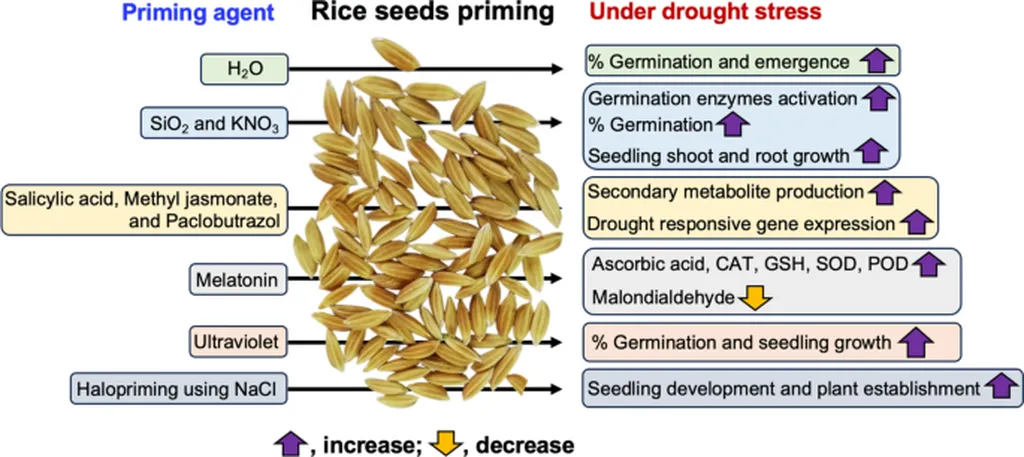In the quest to develop more resilient crops, researchers have turned their attention to the humble flax seed, uncovering insights that could revolutionize breeding programs and bolster agricultural resilience. A recent study published in *Scientific Reports* has shed light on the intricate relationship between seed coat color, drought tolerance, and the influence of gamma-aminobutyric acid (GABA) on germination performance. This research, led by Selcuk Cetin from the School of Graduate Studies at Canakkale Onsekiz Mart University, offers promising avenues for enhancing crop resilience and improving seed quality under stress conditions.
The study evaluated 20 flax varieties, assessing their drought tolerance at the germination stage and the effects of GABA on their performance under drought stress. The findings revealed substantial genetic variation among the varieties, with some exhibiting remarkable resilience while others struggled. Notably, the variety Hermes stood out for its high drought tolerance, while Lisette and Bonny-Doon were identified as drought-sensitive. This genetic diversity is a goldmine for breeders aiming to develop crops that can withstand environmental challenges.
One of the most intriguing aspects of the research is the use of digital image processing to analyze seed coat color and its potential impact on germination parameters. The study found significant differences in drought tolerance levels among flax varieties based on variations in RGB values of their seed coats. While direct pairwise correlations between color parameters and germination parameters were not statistically significant, multivariate PCA-biplot analysis suggested that lighter seed coats tended to show better germination performance compared to darker seed coats.
“This research highlights the potential of incorporating seed coat color parameters into flax breeding programs,” said Cetin. “By understanding these relationships, we can enhance seed germination and overall seed quality under various stress conditions, ultimately improving crop resilience and yield.”
The commercial implications of this research are substantial. As climate change continues to pose challenges to agriculture, the development of drought-tolerant crops is more critical than ever. The insights gained from this study could guide breeders in selecting varieties with favorable traits, such as lighter seed coats, which may confer better germination performance under stress. Additionally, the use of GABA as a tool to alleviate drought stress offers a promising avenue for enhancing crop resilience.
Looking ahead, this research could shape future developments in the field by integrating advanced imaging technologies and biochemical treatments into breeding programs. By leveraging these tools, breeders can more efficiently identify and develop varieties that are better equipped to handle environmental stressors, ultimately improving agricultural productivity and sustainability.
As the agriculture sector continues to evolve, the integration of cutting-edge technologies and scientific insights will be key to meeting the challenges of a changing climate. This study not only advances our understanding of flax germination and drought tolerance but also paves the way for innovative approaches to crop improvement. With further research and application, the insights gained from this study could significantly impact the agriculture sector, contributing to more resilient and productive crops.

